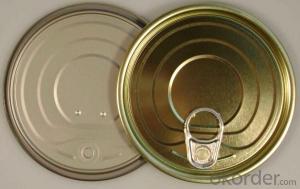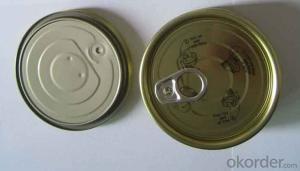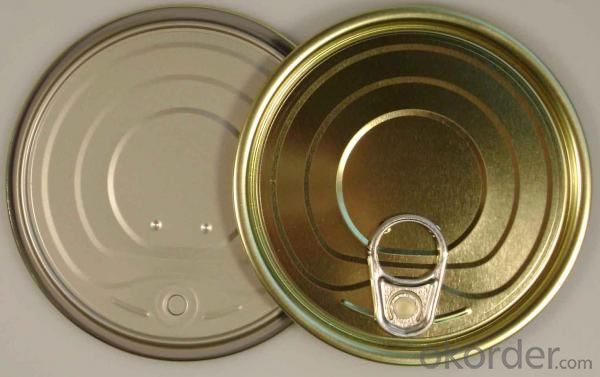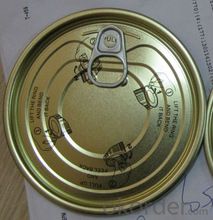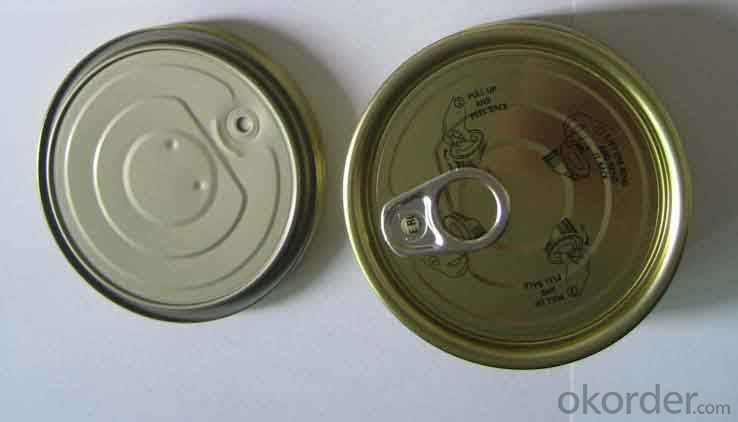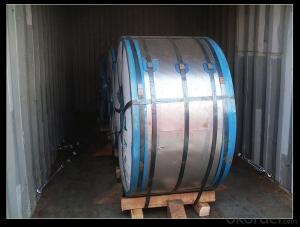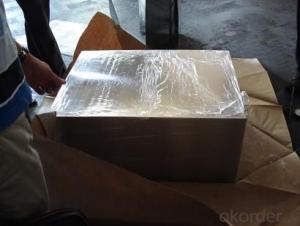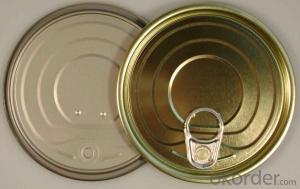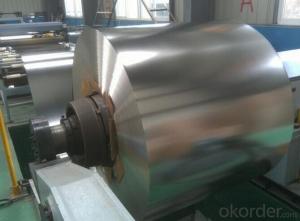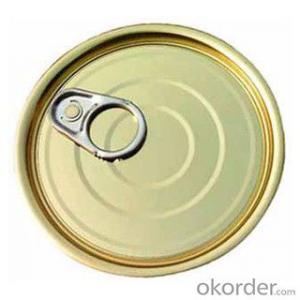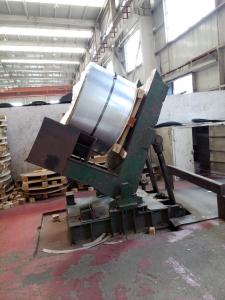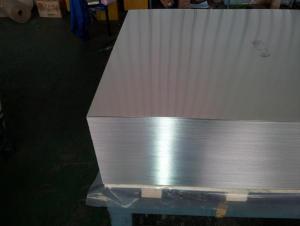High Quality Food Can Easy Open End, 307#
- Loading Port:
- Guangzhou
- Payment Terms:
- TT OR LC
- Min Order Qty:
- 100000 pc
- Supply Capability:
- 100000000 pc/month
OKorder Service Pledge
OKorder Financial Service
You Might Also Like
Name | can easy open end |
Item No. | 307# |
Shape/type | Round |
Size(mm) | Dia 83.3 |
Coating | Aluminized |
Material | Tinplate |
Pcs/20 GP’ | 1,380,000 Customize packing: as clients’ requests. |
Features | 1.Used for packaging of tomato paste,jam,salad…etc. 2.Have illustration printing on the lid. 3.Coating can be according to the customer required. |
Brief Details
Metal Type: Tinplate
Type: Easy Open End, Can lid
Feature: Non Spill, Full open
Custom Order: Accept
Model Number: 307#
Name: 83mm easy open end
Size(mm): 83.3
Inner coating: White porcelain
Shape: Round
Our packing
We could offer package as customers require, by carton or by wooden pallet.
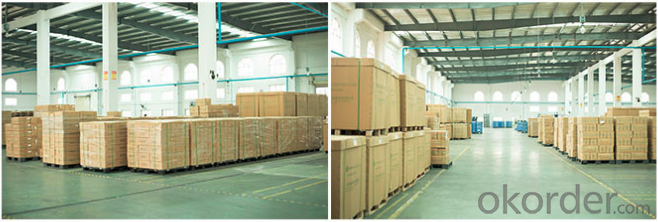
Our Workshop
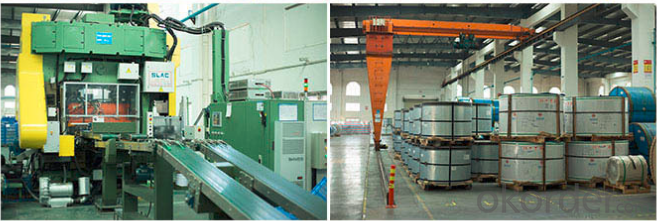
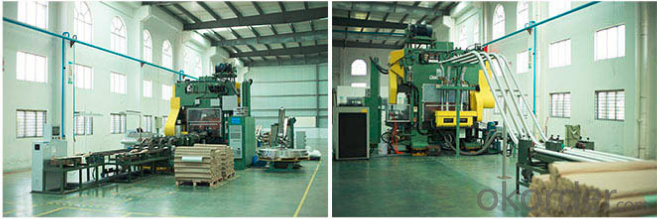
FAQ
1.Q: What is the material of EOE?
We can offer both tinplate and aluminum material made EOE;
2.Q:Could you offer samples for our testing?
YES, we could offer sampler for free if needed;
3. Q:Can you make new mold with customized size I need?
YES, We can make mold for you if reach some qty.
- Q: How does tinplate perform in terms of resistance to mechanical stress?
- Tinplate performs well in terms of resistance to mechanical stress due to its high tensile strength and durability. It can withstand bending, twisting, and impacts without significant deformation or damage.
- Q: How does tinplate compare to paperboard in terms of packaging applications?
- Tinplate and paperboard have different characteristics that make them suitable for different packaging applications. Tinplate is known for its durability, resistance to moisture, and ability to provide a barrier against light, air, and odors. It is commonly used for packaging food and beverages, especially canned goods, as well as for aerosol cans and metal containers. Paperboard, on the other hand, is lightweight, flexible, and easily customizable. It is often used for packaging dry goods such as cereal boxes, pharmaceuticals, cosmetics, and certain types of food. Both materials have their strengths and weaknesses, and the choice between them depends on factors such as the specific product being packaged, desired shelf life, branding requirements, and environmental considerations.
- Q: What are the common uses of tinplate?
- Tinplate is commonly used in the packaging industry for making cans, containers, and lids for food and beverages. It is also used in the production of aerosol cans, paint cans, and metal closures. Additionally, tinplate is used for making various household items such as kitchen utensils, storage boxes, and tin toys.
- Q: What are the main innovations in tinplate production and use?
- One of the main innovations in tinplate production is the introduction of continuous annealing, a process that allows for a more efficient and consistent production of tin-coated steel sheets. This method not only reduces production time and energy consumption but also improves the quality of the final product by ensuring a more uniform coating. In terms of use, the development of tinplate packaging has been a significant innovation. Tinplate cans and containers have become widely used in the food and beverage industry due to their excellent preservation properties and ability to protect the contents from external factors such as light, moisture, and oxygen. Additionally, manufacturers have also started using tinplate in various other sectors like electronics, automotive, and construction due to its durability, corrosion resistance, and versatility. Overall, these advancements in production and use have greatly expanded the applications and benefits of tinplate.
- Q: What is the cost of tinplate?
- The cost of tinplate varies depending on factors such as market demand, size, thickness, and quality.
- Q: How does tinplate packaging contribute to product ease of use?
- Tinplate packaging contributes to product ease of use by providing a durable and lightweight material that is easy to open, close, and handle. Its smooth surface allows for easy labeling and printing of instructions, enhancing clarity for consumers. Additionally, tinplate packaging can be easily shaped into different forms and sizes, making it adaptable for various products and improving overall convenience for consumers.
- Q: How does tinplate contribute to the preservation of paint products?
- Tinplate contributes to the preservation of paint products by providing a protective barrier between the paint and external elements. It prevents corrosion, oxidation, and moisture penetration, ensuring the paint remains in its optimal condition for an extended period of time.
- Q: Can tinplate packaging be used for cosmetic products?
- Yes, tinplate packaging can be used for cosmetic products. Tinplate is a popular choice for packaging cosmetics due to its durability, versatility, and ability to protect the products from external factors such as moisture and light. Additionally, tinplate packaging can be easily customized and decorated, allowing for attractive and eye-catching designs to enhance the brand image of cosmetic products.
- Q: What are the different types of tinplate coatings available?
- There are several types of tinplate coatings available, including electrolytic tinplate (ETP), tin-free steel (TFS), and lacquered tinplate. ETP is the most common type and it provides excellent corrosion resistance and a shiny appearance. TFS, on the other hand, does not contain tin and is coated with a layer of chromium or chromium oxide, offering similar corrosion resistance as ETP. Lacquered tinplate is coated with a layer of lacquer, providing additional protection against corrosion and enhancing the appearance of the tinplate.
- Q: What are the safety regulations for using tinplate in food packaging?
- The safety regulations for using tinplate in food packaging typically involve compliance with government standards such as the Food and Drug Administration (FDA) in the United States or the European Food Safety Authority (EFSA) in Europe. These regulations include guidelines on the composition and quality of tinplate coatings, prevention of migration of harmful substances into food, and adherence to good manufacturing practices to ensure the safety of the packaging material.
Send your message to us
High Quality Food Can Easy Open End, 307#
- Loading Port:
- Guangzhou
- Payment Terms:
- TT OR LC
- Min Order Qty:
- 100000 pc
- Supply Capability:
- 100000000 pc/month
OKorder Service Pledge
OKorder Financial Service
Similar products
Hot products
Hot Searches
Related keywords
